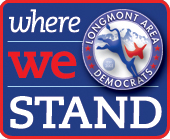Are You Ready for the New Postal Regulations and a Whopping Increase in Costs?
This is probably one of the most under-reported events I have experienced in recent years, particularly when it may result in an increase in postage costs of as much as 50% overall to an uneducated law firm. We’re not talking about just an increase of 2¢ per letter. We’re talking about a whole new labor-intensive mailing process, and some significant price increases in actual postage for the bulk of mail which is sent by a law firm. In fact, for most firms the most significant price increases aren’t even on the radar screen. I know they weren’t on mine. But I attended a seminar today presented by ITS Mailing Systems, an authorized dealer for Hasler. And it was an eye-opener.
Currently our postal system operates on strictly a weight-based methodology. Aside from a slight up-charge for the first ounce on “oversized” envelopes (e.g. our flat letter-size tyvecs) everything is based on weight. Each ounce adds an additional amount. Effective May 14th, we will move to a shape-based pricing system. Under the new system, there will be three different pricing factors: size; thickness; and weight. There are even some rigidity factors which can influence cost, meaning that if you stuff the envelope so tightly it cannot bend, there is an additional cost.
The postal service has known for quite some time that it is much more expensive to process and route flat envelopes and heavy parcels. But their pricing was always computed on the same basis as a standard envelope. By the same token, non-standard sized items which are smaller than their normal counterparts, are also more expensive to route, but again, are priced based on a standard postcard or letter rate. All that is about to change. The postal service just received approval in February to put these new standards into effect as of 5/14/07. And some last minute changes were applied, so those who reported early on the upcoming changes reported incorrect information in some aspects. That is probably why so little information has already been disseminated.
NEW POSTAGE RATES
First class letter current rate: 39¢ plus 24¢ for each additional ounce
First class letter new rate: 41¢ plus 17¢ for each additional ounce
Bottom line impact on 2 oz letter: cost DECREASE from 63¢ to 58¢
(a 5¢ or 7.9% cost decrease)
Bottom line impact on 3 oz letter: cost DECREASE from 87¢ to 75¢
(a 12¢ = 13% decrease)
Under the new regulations a letter must be no smaller than 3.5” x 5” and at least .007” thick, and not more than 11.5” long, 6 1/8 “ high, 1/4” thick, and the aspect ratio (length divided by height) cannot fall between 1 to 1.3 and 1 to 2.5 inclusive.
So far so good. Even though there’s a rate increase, if all you do is send lightly filled #10 envelopes of 2+ ounces, your postage costs will go down. But is that what law firms predominantly send? Heck no. Typically, you’re sending an great proportion of your email in 8.5” x 11” flat tyvec envelopes, or in hugely overstuffed #10 envelopes. And here is where two significant changes in postal pricing will immediately and significantly impact law firm postage costs.
First, let’s look at a typical flat (the 8.5” x 11” or larger size tyvec envelope) with 2 ounces.
First class flat current rate: 39¢ plus 24¢ for each additional ounce
First class flat new rate: 80¢ plus 17¢ for each additional ounce
Bottom line impact on a 2 oz flat: cost INCREASE from 63¢ to 97¢
(a 34¢ = 54% increase)
Get the picture? All we’re hearing about is the modest 9% increase on the standard first class letter, and how those additional ounces will actually result in a modest savings. And that’s all true. But it will be more than offset by the whopping increase on your flat envelopes.
Next, let’s look at the typical overstuffed envelope.
A #10 letter envelope with 12 pages inside will not squeeze through the 1/4” thick dimension. So even though it only weighs approximately 2.4 ounces, it will have to go into a flat. Here is the impact on cost:
First class overstuffed envelope weighing 2.4 oz at current rate: 87¢
Flat envelope weighing 2.4 oz at new rate: $1.14
Bottom line impact on 12-page mailing: cost INCREASE from 87¢ to $1.14
(a 27¢ = 31% increase)
Parcel Post:
Currently, anything heavier than 13 ounces qualifies as a parcel, and postage costs will very based on a combination of weight and distance. Under new regulations, anything greater than 3/4” thick qualifies as a parcel, regardless of weight. That means that some of your current over-stuffed mail which goes out under first class pricing will be reclassified as a parcel at much higher pricing.
A 2 ounce parcel package will be increasing in price from the current 63¢ to $1.30. That represents a 67¢ = 106% increase in price. Add to that the fact that some of your mail which previously went out under a much lower rate structure will now be classified as parcel, and you can only imagine the impact this will have on your bottom line.
WHAT CAN YOU DO TO HELP CONTROL THE COST INCREASES?
First, start making better use of electronic transmission of documents. Remember to keep security in mind. It’s time to look seriously at encryption.
Second, consider switching from a #10 envelope to a 6×9 envelope for first class mail. Why? You only have to fold items once to get them into a 6×9, but you have to fold them twice for the #10. By only folding once you have a much greater likelihood of staying within the thickness limitation.
For example, let’s take another look at those 12 pages which would be too thick in the #10 envelope and would have to go into a flat at a cost of $1.14. You can stay within the thickness requirement by using a 6×9 envelope, and reduce the cost to 75¢ . That’s a savings of 39¢ = 35% based on new pricing, just by switching envelope size.
Third, consider switching from a flat (8.5 x 11 or larger tyvec) to a 6×9 envelope. I know we all like to send some things out flat so they are not folded, but your postage costs for these flats will skyrocket 54% under the new regulations if you don’t reconsider.
Fourth, consider two-sided printing on items which are being sent for review or which do not have to be filed or signed.
Finally, you have to take a hard look at your labor costs once again when it comes to handling your mail. For small and mid-size firms it has been cheaper to have a clerk or secretary handle the outgoing mail than invest in pricey mailing equipment which weighed and automatically set the postage. Sure, you probably have a scale and meter, but likely they’re not integrated. Now that you have to take thickness and overall dimensions into account, depending on your volume it may become cheaper to have a piece of equipment make the decisions, particularly where determining thickness is concerned. Mistakes will mean returned and delayed mail. And if you have to do proof of service, it means redoing that too when items are returned because they are a hair over the thickness limitations.
If you work with relatively small quantities of mail, you may find a shape-based template helpful. This device, offered by various postage meter dealers, and allegedly the USPS (I asked and they have no knowledge of this template at my local post office, nor can I find it online at the USPS web site), costs about $75 to $200 and allows you to measure the dimensions of each piece of mail by hand. The tool features slots to check thickness and rulers to measure the other dimensions. You then look up the total cost based on your measurements and the weight of the package.
The template is impractical for large quantities of mail, though. For high mail volumes, consider a dynamic weighing platform (DWP). A DWP automatically measures and weighs your packages to accurately calculate postage. They’re expensive – $4,000 to $5,000 or more – but they let you automate large quantities of mail quickly. They should also connect directly to your postage meter to further speed the mailing process.
And before you just decide to put an iron in your mail room in order to squeeze the mail down to the minimal thickness possible, keep in mind that there are those pesky rigidity rules which will restrict you from doing it without risking your mail be returned for yet another reason




















